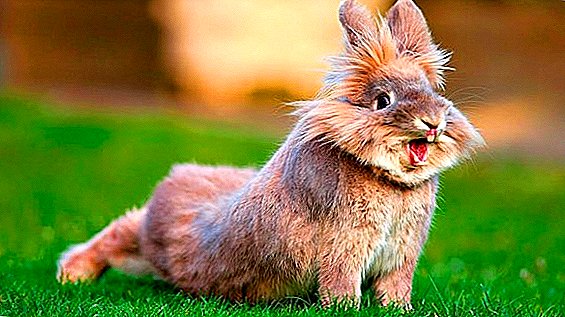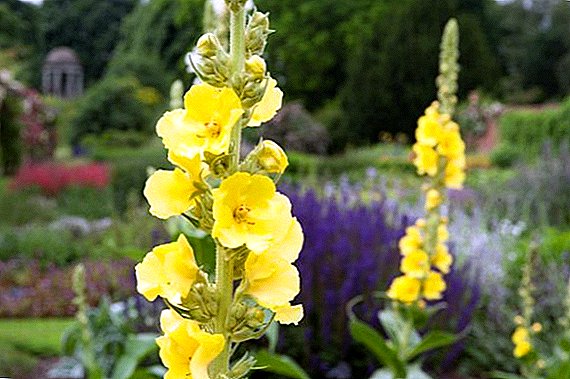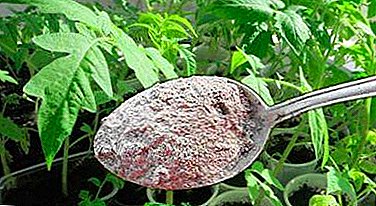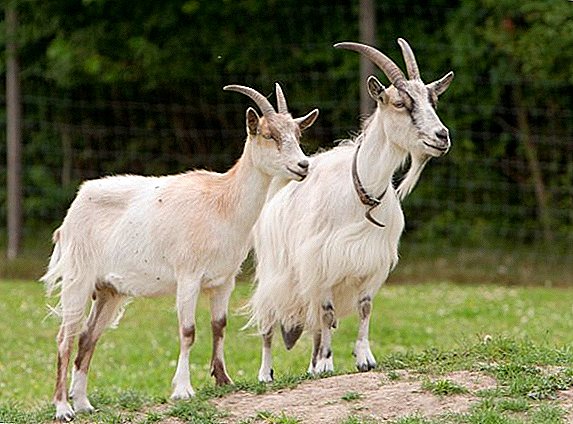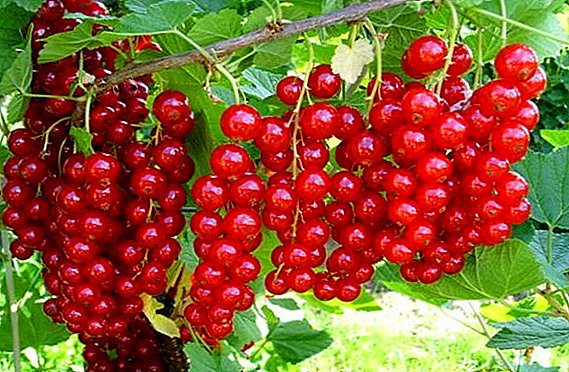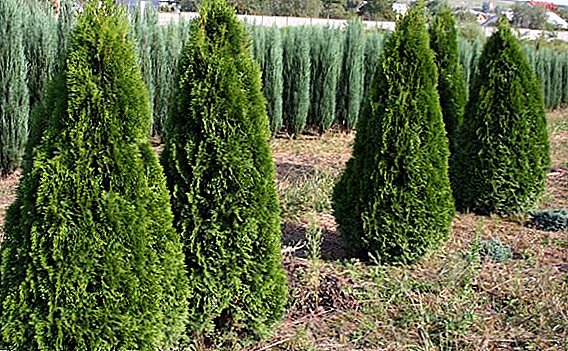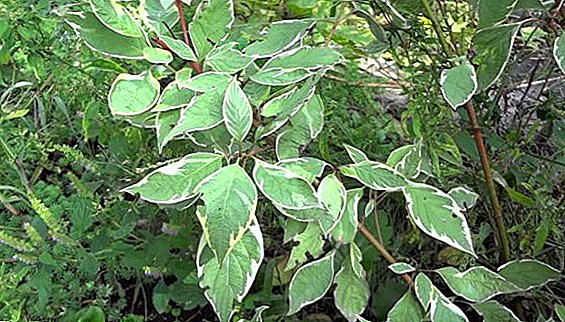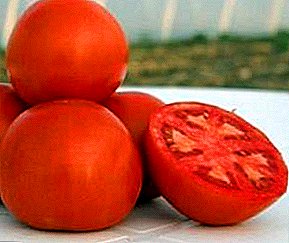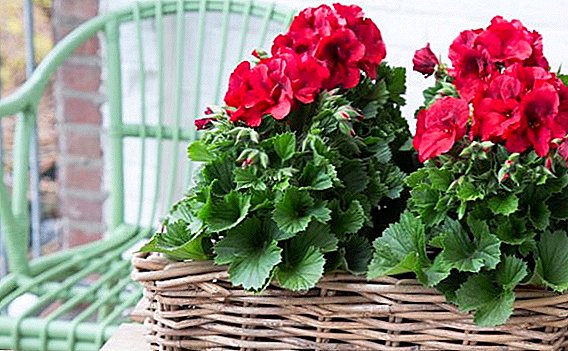 Royal Pelargonium - a flower originating from South America. They brought it to Europe in the XVIII century, and since then, breeders bred a lot of varieties. In this article we will talk about royal pelargonium, care for the flower at home, as well as be able to see photos of the plant.
Royal Pelargonium - a flower originating from South America. They brought it to Europe in the XVIII century, and since then, breeders bred a lot of varieties. In this article we will talk about royal pelargonium, care for the flower at home, as well as be able to see photos of the plant.
Short description
This flower is small, can reach up to 60 cm in height. The plant has upright and grassy stems. Bush is completely covered with leaves of emerald color, which have a rough surface and light down. Pelargonium inflorescences are large, and with proper care, they can reach 25 cm in diameter.  On average, the diameter of the inflorescences is 15 cm. The flower stalks have different lengths: from 5 to 10 cm. The flower itself grows up to 7 cm in diameter. Forms and colors can be very different: white and purple, orange and purple, red and pink. Buds can be monophonic or with contrasting inclusions. Flowers can have wavy, corrugated or even edges.
On average, the diameter of the inflorescences is 15 cm. The flower stalks have different lengths: from 5 to 10 cm. The flower itself grows up to 7 cm in diameter. Forms and colors can be very different: white and purple, orange and purple, red and pink. Buds can be monophonic or with contrasting inclusions. Flowers can have wavy, corrugated or even edges.
The royal plant blossoms, unlike the usual geranium, not for long, about 4 months. Flowers look great on window sills, balconies and hanging pots.
Royal Pelargonium as a botanical species is called Grandiflora (Pelargonium grandiflorum) and belongs to the Geranium family. Despite the fact that geranium and pelargonium are different plants, sometimes geranium means pelargonium.
Popular varieties
Consider the popular varieties of royal pelargonium with photos:
- Variety 'Mandarin' has orange flowers. In the middle, the buds are white, on the even edge of the petals there is a white rim.
- 'Candy Flowers Bright Red' - the plant has cherry-red flowers, and you can see blurred black spots on the petals. This variety branches well and blooms long.
- 'Regalia Chocolate' - large flowers of dark red color with chocolate tint. The edges of the petals are even and wide open.
- `Carisbrooke` -the flowers of this variety are light pink. On the upper petals there is a thin marble pattern in the form of specks and strokes.
- 'Lavender Grand Slam' - the plant has an average height and pink-purple flowers. Dark-purple feathers are noticeable on the upper petals.
- 'White Glory' - flowers are large, more than 7 cm in diameter. They are snow white in color and do not have a single speck.
- 'Sally Munro' - variety has large flowers. The upper petals are dark red, and the lower ones are pinkish. This variety is able to bloom for the season more than once.
- 'Candy Flowers Pink with Eye' - flowers of muted pink shades with black specks on petals.
- 'Mona Lisa' - flowers large and white. In the middle are red stamens, and sometimes pink strokes can be seen near them. Petals have wavy edges.
- 'Black Prince' - small bush, up to 40 cm tall. The flowers have a plum shade, and on the petals there is a silver rim.
- `Georgina Blythe` - on a small plant are large red flowers with an orange tint. Their neck is white. Petals have wavy edges.
- 'Morwenna' is a small variety with large dark red almost black flowers. Petals have lace edges.












Did you know? Geranium essential oil, which is obtained from the green part of the plant, is a very valuable drug. It is also used in aromatherapy to calm the psyche and to lift the mood.
What to look for when buying
To get a flower is best in proven places. Buying pelargonium, pay attention to the state of the inflorescences and the bush. They should not be wilted. There should be no damage on the leaves - this may indicate the presence of disease.
Do I need to replant the plant after purchase
Mostly flowers are sold in disposable containers and with unsuitable substrate. Therefore, after buying the flower is recommended to transplant.
Important! Repot the plant only if it does not bloom.
For the preparation of the substrate for pelargonium use 1 part of sand and 2 parts of humus, leaf and sod land. If it is not possible to prepare the mixture yourself, then you can buy in the store the usual nutrient substrate for flowers. The pot must match the size of the root system. Large capacity is not worth taking, since in it the pelargonium goes into greens, and you can not wait for flowering.
Follow home care
Royal geranium (geranium) requires a certain care in the home.
Location and lighting
For a royal plant to bloom densely, it needs good lighting. If you place the royal flower in the shade, it will grow, but will not give buds or flowering will be short.
To ensure the required amount of light, the flower must be placed on the southern window-sills. But it is necessary to ensure that the bright rays of the sun do not fall on the plant, otherwise they can burn the leaves. In winter, the royal flower needs additional illumination, as the stems are drawn out due to the lack of light.
Pelargonium can be used in vertical gardening. In addition, it is not just a beautiful indoor flower, but also useful: pelargonium has many healing properties. This is a good option for accommodation in the bedroom.
Temperature conditions
In the hot season, the optimum temperature for pelargonium should not exceed 24 ° C. In winter, the flower will feel good at 12-15 ° C. If the plant overheats or stands in a draft, then you can not wait for flowering.
Watering
Royal Pelargonium loves moisture, so watering is plentiful. But stagnation of water should not be allowed. On hot days it is necessary to water a flower 2 times a day. In winter, watering is reduced. Pelargonium does not like when water falls on the leaves, so it is not recommended to spray the flower. And you need to water the plant at the root. 
Top dressing
Fertilize the royal plant should be regularly - in spring and summer, this is done 1 time in 2 weeks. It is necessary to feed the flower with minerals, which include 3 components: magnesium, potassium, nitrogen. Ready-made complexes with additional additives can be purchased. If fertilizers are made independently, then minerals should be taken equal parts. And before flowering increase the composition of potassium and reduce nitrogen.
To increase the number of buds, growers recommend adding iodine: 1 drop of iodine diluted in 1 liter of warm water. This solution should be watered on the wall of the pot to avoid burns. 50 ml of solution are used per plant.
Important! The main thing - do not overdo it with top dressing, it will lead to yellowing of the leaves.
Pruning
Pruning royal pelargonium (geraniums) is carried out for lush flowering and to make the shape of the flower compact. This should be done after flowering. This is mainly done at the end of summer and at the beginning of autumn. The second wave of pruning is carried out after 1.5 months in order not to injure pelargonium.  Trimming rules:
Trimming rules:
- pruning is necessary, taking into account the peculiarities of the plant - the flower should be small and have a bush form;
- the procedure is carried out with the help of a sharp disinfected knife or shears at the level of the leaf node;
- cuts should be treated with charcoal;
- stems growing inward must be completely removed.
- need to remove faded stems and buds that have faded;
- it is necessary to cut the dried leaves;
- you need to carefully examine the pelargonium and determine which shoots are best to cut to create a beautiful crown;
- naked and long stalks are removed;
- for a flower that is preparing for wintering, it is necessary to cut the third part of the main stem.
Features of care in the winter
In October, the royal pelargonium begins a period of rest, which lasts through March. Flower care at this time is almost not required. The main thing - do not allow the earthen clod to dry. Feeding stop. In winter, the flower should be at a temperature of 12-15 ° C. Also, with the help of additional lighting, it is necessary to extend the light day for geraniums, so that the stems are not strongly stretched by a lack of light.
How often do the transplant
Many are interested in the question of why royal geranium does not bloom. One of the solutions to this problem can be a timely transplant. This should be done at least once every 2-3 years. It is also not recommended to carry out the procedure more often - the flowering of pelargonium may slow down.
The flower should be transplanted into a small pot so that the roots fit into it. In the tank must be drainage holes. Particular attention should be paid to the very drainage, which will not allow water to stagnate. Use as a drainage can be broken bricks, sea pebbles or expanded clay.
Did you know? Pelargonium is said to enhance the health of red, pink geranium is used in love magic and attracts love, and plants with white flowers increase fertility.

Diseases and pests: prevention and treatment
Pelargonium diseases include:
- Gray rot. This disease develops due to an excess of moisture in the soil and a high content of nitrogen in it. Brown spots appear on leaves and stems. On all parts of the plant appears gray scurf. The flower must be transplanted into a new ground and treated with fungicides such as Fundazol, Rovral, Vitaros.
- Root and stem rot. Evidence of this disease black root neck, which begins to rot. The leaves become pale, and later they turn yellow and wither. The cause of this disease is increased moisture and low acidity of the soil. Fight with rot recommended drugs "Biporam", "Fitolavin."
- Late blight. The flower is affected by the fungus and quickly fades and decays. The fungus is mainly transmitted from the ground, but it can be drafted from another plant. The disease develops due to high humidity. Pelargonium leaves turn pale, the plant slows down in growth. You can also see white fluff in the hearth of rot. Treat the plant with Bordeaux liquid. Damaged parts of the plant must be removed, and cuts processed with charcoal. Be sure to require a transplant in a sterile pot and substrate.
- Eden. On the leaves are formed tubercles and growths. This disease occurs due to waterlogging. It is necessary to cut the diseased leaves and reduce watering.
- Verticillary wilting. This disease is very dangerous. Affected plants should be destroyed, and shoots with signs of the disease cut off. It is necessary to process plants with the help of Trichodermin biofungicide. You can also use Topsin and Fundazol.

Why does not bloom
Consider what to do if royal geranium does not bloom. One of the reasons may be a very large pot. Geranium increases green mass, grows. And for flowering, she does not have enough strength, since all the energy goes to the growth of greenery and roots. To pelargonium bloomed, it must be transplanted into a container with a smaller volume.
Also, the reason may be that a pest has settled in a geranium or a flower has fallen ill. All forces are spent on fighting them, so the buds are not formed.
The lack of a resting phase is also the reason why the royal plant does not bloom. In this case, it is necessary to reduce watering in autumn and winter, and also should stop feeding. Warm in winter is detrimental to the flower, so it should be in a cool place.
Despite all the difficulties of caring for royal pelargonium, it will delight you with its appearance and lush flowering.



